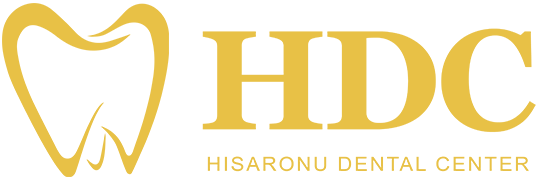Aesthetic Dentistry Applications
Cosmetic dentistry is a discipline within dentistry that aims to enhance an individual's smile by correcting worn, irregular, discolored, and spaced teeth, and ensuring harmony between the teeth and surrounding tissues (gums, lips, and facial appearance).
All individuals who cannot perform functions such as chewing, speaking, and laughing ideally for various reasons are treated with Aesthetic Dentistry applications within the scope of oral and dental health. In Aesthetic Dentistry, which includes applications that significantly correct discoloration and deformities of the teeth, the patient and the patient's expectations are first taken into consideration. Following this stage, the treatment process is initiated to create a tooth alignment that is both aesthetically and biologically compatible with the patient.
Smile Design
NEW WEBSITE
LATEST EVENT
Smile design is the creation of a personalized smile shape through the evaluation and detailed aesthetic analysis of the individual's anatomical structures and their relationship with each other, including the lips, gums, and teeth.
- Laminate Applications (Porcelain and Composite)
- Bonding (Adhesive Systems)
- Light-Cured White Fillings
- Porcelain Fillings (Inlay or Onlay Fillings)
- Fiber Applications
- Sensitivity Reduction Techniques
- Crown Lengthening
- Full Porcelain Crowns
Digital Smile Design
Digital smile design is the process of digitally modeling a patient's current smile using specialized software and digital imaging technologies and simulating the desired aesthetic outcome.
Digital smile design is the process of digitally modeling a patient's current smile using specialized software and digital imaging technologies and simulating the desired aesthetic outcome.
How is it Applied?
- Initial Evaluation: The patient’s current condition is examined, and their desires and expectations are identified.
- Digital Imaging: The patient’s mouth is digitally scanned using specialized software and digital imaging devices.
- Smile Design: Using digital modeling software, the patient’s smile is simulated to achieve the desired aesthetic results.
- Planning and Application: Once the digital smile design plan is approved by the patient, the treatment is carried out.
- Evaluation of Results: After the procedure is completed, the patient’s satisfaction and the aesthetic results are evaluated.
What are the Advantages?
- Preview: Patients can see their digitally designed smile in advance and make desired changes before giving their approval.
- Accurate Planning: Digital smile design allows dentists to better understand the patient’s desires and expectations, helping to create an appropriate treatment plan.
- Aesthetic Results: Digital smile design enables more precise and aesthetic results, increasing patient satisfaction.
- Quick and Effective: Digital smile design can be carried out more quickly and effectively compared to traditional methods.
- Technological Advancement: This technology is a testament to the technological advancements in dental practice and makes treatment processes more efficient.
Conclusion
Digital smile design is an extremely effective method for those who want a perfect smile. This technology is used to better understand patients' desires and create a treatment plan accordingly.
Teeth Whitening
Our smile is one of the most important elements that shape our first impression. However, factors such as tea, coffee, smoking, and aging can cause discoloration of the teeth over time. Fortunately, teeth whitening methods have made achieving a bright smile much easier.
Step 1: Initial Assessment
Professional teeth whitening treatment typically begins with an initial assessment. The dentist evaluates the patient's current tooth color, gum health, and other potential issues.
Step 2: Teeth Cleaning and Preparation
Before the treatment, the teeth are first cleaned and freed from deposits like tartar. This allows the whitening gel to penetrate the teeth more effectively. Then, a preparation stage is carried out to remove stains accumulated on the protective layer of the teeth, the enamel.
Step 3: Whitening Stage
Professional teeth whitening treatment usually involves a gel containing hydrogen peroxide. Then, a light device is used to accelerate the effect of the whitening gel. This stage can typically take between 30 minutes to 1 hour and may require one or more sessions.
Step 4: Final Assessment and Recommendations
After the whitening procedure is completed, the color of the teeth is measured, and the patient's satisfaction is checked. Post-whitening dental care and diet recommendations are also provided to the patient. These suggestions can help the whitening results last longer.
What are the Advantages?
- Fast and Effective Results: Professional teeth whitening treatment provides quick and effective results, allowing patients to immediately notice the change in their smile.
- Safe and Controlled Environment: Whitening procedures performed in the dental clinic are safe as they are conducted under the supervision of a dentist, preventing potential complications.
- Long-lasting Results: With proper care and regular check-ups, professional teeth whitening results can be long-lasting, enhancing your smile in the long term.
Porcelain Laminates
Today, aesthetic dentistry offers many options to perfect your smile. Porcelain laminate treatment is becoming increasingly popular for correcting aesthetic imperfections in your teeth and achieving a perfect smile.
What is Porcelain Laminate?
Porcelain laminate involves applying a thin porcelain coating to the front surface of the teeth. This coating is used to correct the color, shape, and size of the teeth. Porcelain laminate treatment is an ideal solution for addressing aesthetic imperfections such as cracks, discolorations, gaps, and minor misalignments in the teeth.
How is it Applied?
Porcelain laminate treatment typically involves a three-step process. First, adjustments are made to the front surfaces of your teeth. Then, impressions are taken, and specially prepared porcelain laminate veneers are created in the laboratory. Finally, the veneers are bonded to the teeth and shaped to fit.
Who is it Suitable for?
Porcelain laminate treatment is generally suitable for individuals with healthy teeth who want to correct aesthetic imperfections.
Conclusion
Porcelain laminate treatment is an effective and reliable option that reveals the secrets of an aesthetic smile. With its natural appearance, durability, and ability to correct aesthetic imperfections, it has become a preferred choice for many people. Live your smile as you deserve!
Zirconium
What is Zirconium Crown?
Zirconium crown is a thin layer placed on the front surface of the teeth, made from a durable material called zirconium. Zirconium has a color very similar to natural teeth and is highly durable. Therefore, it is an excellent option for those seeking aesthetics and durability.
What are the Advantages?
- Aesthetic Appearance: Zirconium crowns provide a natural-looking appearance similar to natural tooth tissue, beautifying your smile naturally.
- Durability: Zirconium is an extremely durable material and can be used comfortably in daily activities.
- Color Stability: Zirconium crowns do not undergo color changes over time and maintain their natural whiteness.
- Biocompatibility: Zirconium is a material compatible with the gums, reducing the risk of allergies.
Conclusion
With its natural appearance, durability, and biocompatibility, zirconium crown treatment is one of the effective solutions offered by modern dentistry. Feel the change in your smile!
Inlay/Onlay Restorations
What are Inlays and Onlays?
Inlays and onlays are specially designed restorative materials used to treat moderate issues such as medium to large cavities, fractures, or other damages in the teeth. The primary difference between the two treatments is the surface and size of the area they are applied to.
- Inlay: Inlays are restorations made from porcelain or composite materials prepared in the laboratory based on the measurements taken from the decayed or damaged area of the tooth. Inlays are applied to the upper surface of the tooth and typically cover the decayed or damaged area.
- Onlay: Onlays cover a larger restoration area than inlays. They not only cover the decayed or damaged area but can also extend to cover part of the tooth externally. Therefore, onlays typically fit over a larger area of the tooth.
What are the Advantages?
- Natural Appearance: Inlays and onlays can be specially designed to match your tooth color, providing a natural appearance.
- Durability: Inlays and onlays made from porcelain or composite materials enhance the durability of your teeth and provide long-term protection.
- Easy Maintenance: Inlays and onlays are easier to clean and maintain compared to other restoration methods.
- Aesthetic Results: They effectively repair damage to the teeth, allowing you to achieve an aesthetic smile.
What are we doing?
We offer a comprehensive range of dental services, including tooth extraction, fillings, root canal treatment, gum disease treatment, implants, and prosthetics, delivered by our expert team.
Quick Contacts
- Phone : +90 533 633 78 48
- Email :info@hdcturkey.com
- Ölüdeniz Mah. Cumhuriyet Cd. No:35/5 Fethiye/Muğla
- HDC Turkey 2024, all rights reserved. No images may be used without written permission.

